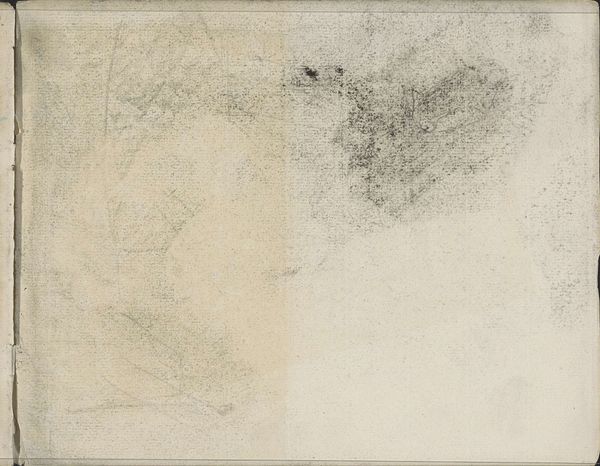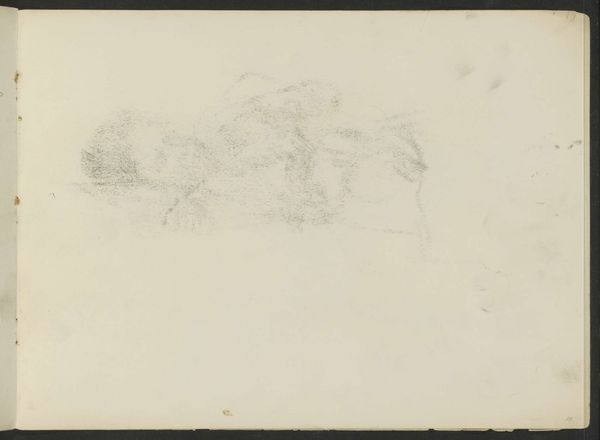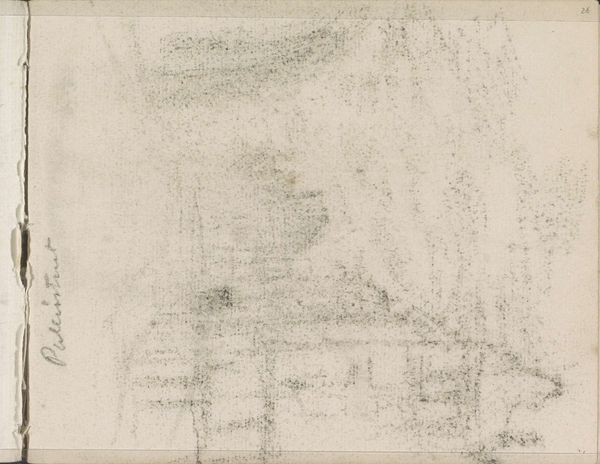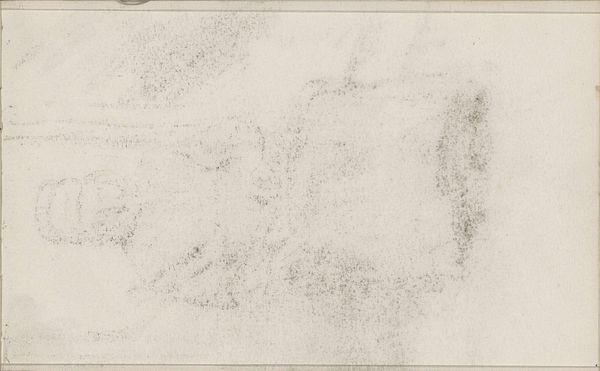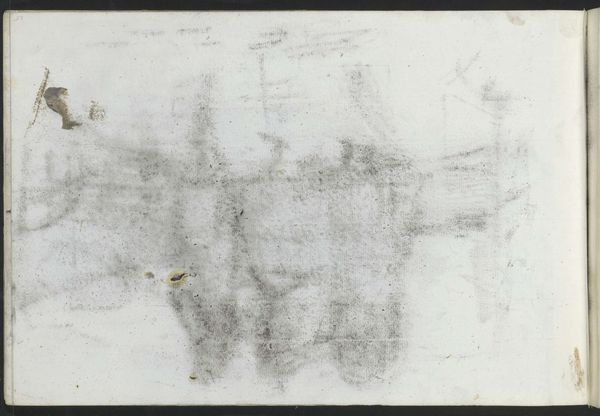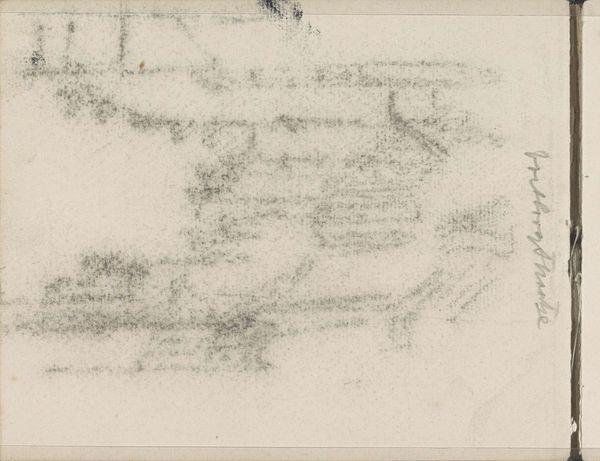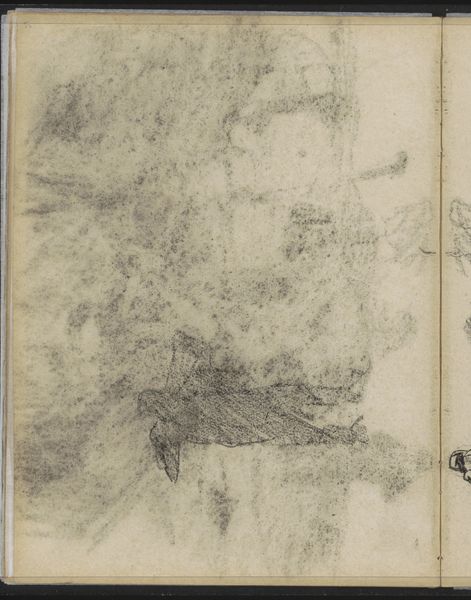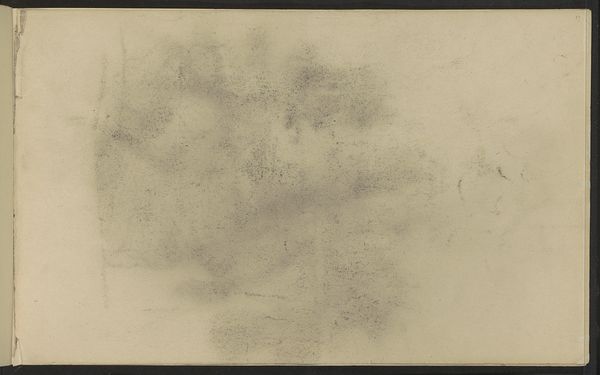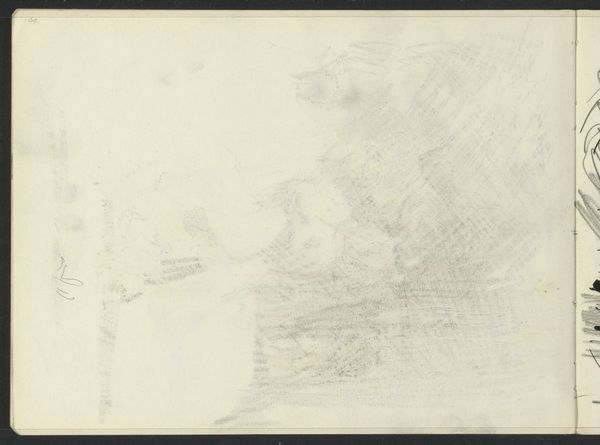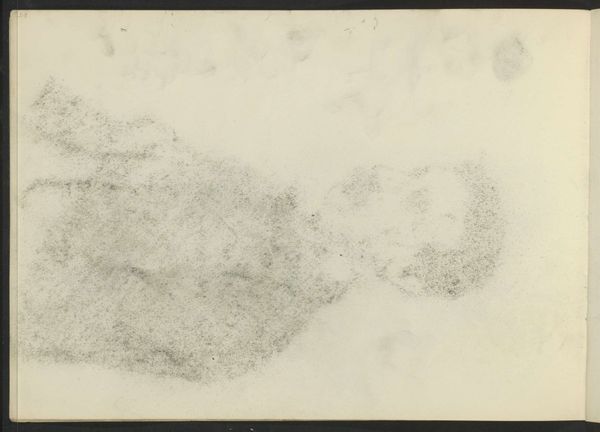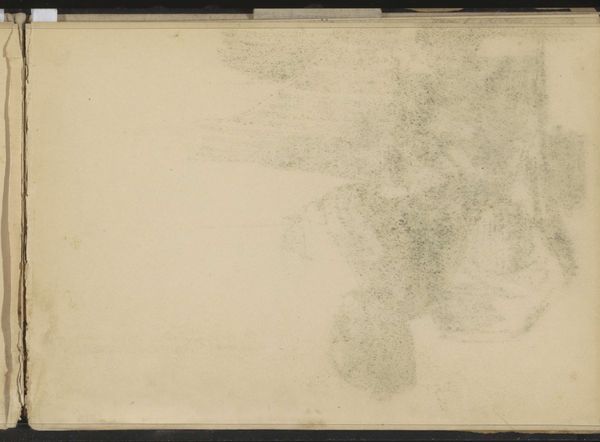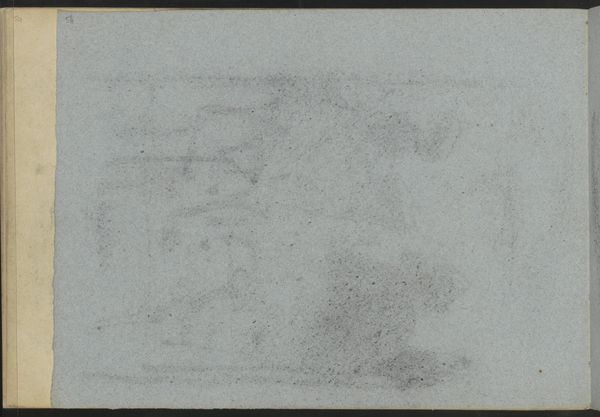
Copyright: Rijks Museum: Open Domain
Editor: This pencil drawing, "Abklatsch van de krijttekening op pagina 9," by Willem Witsen, dates back to around 1897-1910. It’s a bit blurry, almost dreamlike. What strikes you most about it? Curator: What I find compelling is how this seemingly simple landscape engages with notions of visibility and erasure. The ‘blurry’ quality, as you say, challenges the traditional idea of landscape as a purely representational genre, one that faithfully reflects the external world. Think about it within the context of the late 19th century, when social structures were under immense scrutiny and traditional artistic conventions were being challenged. Is Witsen perhaps hinting at the unstable nature of observation, suggesting that our perception of "landscape" is as much about what we fail to see, as what we do see? Editor: So, the ‘blurriness’ isn't just a technical thing. It has meaning, right? That makes me think about access… maybe who has clear access to the land versus who sees only a distorted view. Curator: Precisely. The work can be viewed as a lens for exploring socio-political dynamics embedded within landscape. How might a feminist perspective, for example, re-frame this apparent ambiguity, questioning patriarchal notions of claiming space? Editor: Interesting! I hadn’t considered it like that. It’s more than just a pretty drawing then; it’s like a silent commentary on the period’s socio-political atmosphere. Curator: Absolutely. It allows us to consider how art can serve as a site of quiet protest and an inquiry into the nuances of seeing and being seen. What’s particularly rewarding here, is to discover a renewed appreciation for drawings as cultural records, documents, even monuments. Editor: Definitely. I see it now – art reflecting life, even in a subtle blur.
Comments
No comments
Be the first to comment and join the conversation on the ultimate creative platform.


